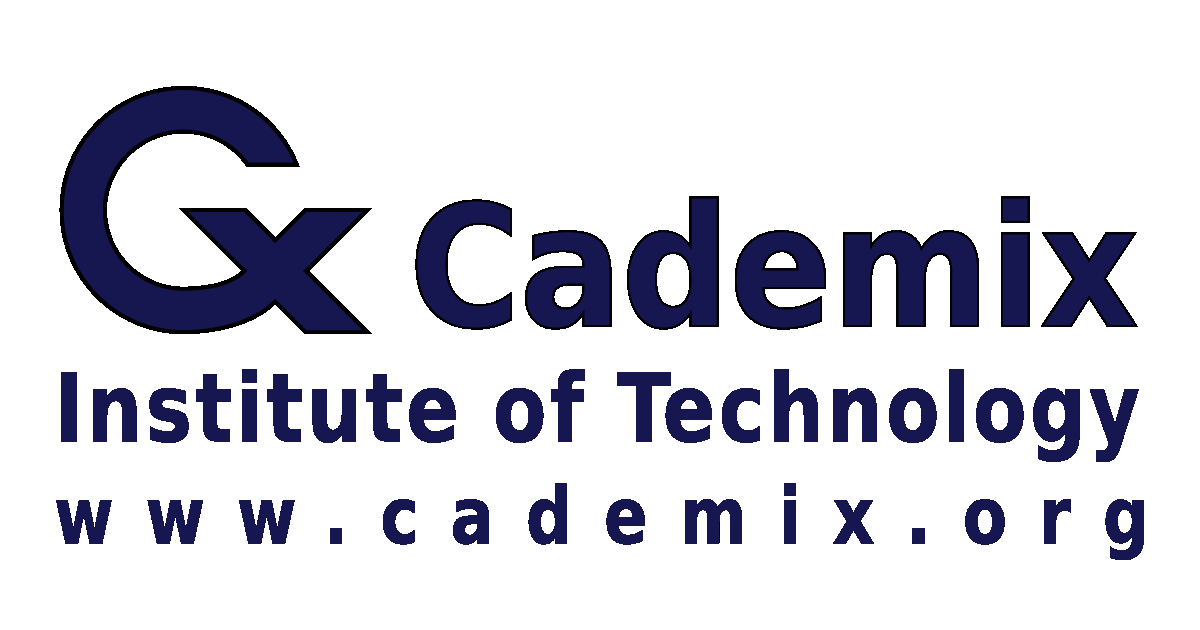In an increasingly competitive digital landscape, developing and maintaining trust with potential customers has become a strategic imperative. By leveraging the power of a robust CRM (Customer Relationship Management) system in tandem with the “trust quadrant” of the content matrix, businesses can systematically deliver evidence-based, personalized messages that guide prospects along the customer journey. This approach positions relevant data—such as case studies, comparative analyses, and real-world results—exactly where it is needed, ensuring that audiences remain in the high-trust zone until conversion. Moreover, CRM-driven segmentation and automation enable real-time responsiveness and precise follow-ups, creating a strong foundation for sustained brand loyalty and long-term growth.
By Seyed Mohsen Hashemi Pour, Cademix Institute of Technology
Table of Contents
Introduction
Content marketing often revolves around a strategy known as the content matrix, which divides content into different “quadrants” or categories, each serving a specific purpose in the customer journey. One of the most critical of these quadrants is the trust quadrant—or the third quadrant—where you provide factual, data-driven, and logically presented material to build confidence in your brand.
While crafting solid, trust-focused content is crucial, many businesses overlook an essential operational element: a Customer Relationship Management (CRM) system. CRM may not be content itself, but it is the tool that ensures potential customers remain in the trust zone long enough to convert into loyal buyers. In this article, we explore how CRM supports and amplifies the effectiveness of trust-building content, offering an actionable blueprint for businesses looking to elevate their content marketing strategy.
Understanding the Content Matrix and the Trust Quadrant
Understanding the fundamental structure of content marketing strategies requires a close look at the content matrix, a conceptual framework that categorizes various forms of content according to their purpose and impact on the audience. Within this matrix, marketers typically identify four distinct quadrants: entertainment, inspiration, education, and trust. Each quadrant has a unique role in shaping how consumers perceive a brand, engage with its messaging, and ultimately make purchasing decisions. The quadrant dedicated to trust has recently gained increased attention in the marketing community because it addresses a specific stage in the customer journey where potential buyers seek facts, logical proof, and external validation before they commit. By exploring why people rely on demonstrable evidence and credible sources to feel secure in their choices, businesses can adjust their strategies to present exactly the kind of information these individuals need in order to move forward. The core idea of the content matrix is to ensure that you produce, distribute, and manage different types of content in a balanced manner, without relying on a single style or message to reach all potential customers. While entertaining or inspirational content may succeed in drawing initial attention and sparking interest, and educational content might provide knowledge or skill-building opportunities, the trust quadrant plays the critical role of removing lingering doubt. When users reach a certain point in their decision-making process, they typically need to confirm that the brand or product is genuinely capable of meeting their expectations. The trust quadrant exists to satisfy that need by offering objective, expert-oriented materials such as case studies, data-backed comparisons, testimonials from respected voices in the field, or transparent demonstrations that showcase product performance. In essence, the content matrix acknowledges that different psychological drivers come into play at different stages of the customer journey, and that trust-building is not a trivial component but rather a decisive element that encourages customers to take the final leap. This paragraph sets the stage for a detailed exploration of why the trust quadrant matters, how it interacts with other quadrants, and why it is so crucial to modern marketing strategies that aim to convert uncertain browsers into confident buyers.
The content matrix organizes marketing materials into four categories based on the audience’s mindset and the goals of the brand. Entertainment content, for instance, grabs attention by tapping into humor, novelty, or emotional appeal; it captivates people who are scrolling through social media or browsing websites, but it rarely goes deep enough to persuade them to consider a purchase or further investigate a brand’s credibility. Inspiration content focuses more on motivational stories, uplifting narratives, and aspirational imagery, often evoking strong emotions that can prompt individuals to see a product or service as aligned with a better version of themselves or a greater cause. Educational content aims to inform, instruct, and deliver insights that empower readers, viewers, or listeners. By offering how-to guides, tutorials, research findings, and white papers, a brand demonstrates its expertise in a particular field and fosters a sense of appreciation or even indebtedness from the audience. Yet, while educational content can be effective in opening people’s minds to new possibilities or clarifying complicated topics, it does not necessarily close the gap on skepticism. The trust quadrant, meanwhile, centers on the necessity of presenting data, evidence, and verifiable sources that confirm a brand or product can do what it promises. This might involve real-world examples such as usage statistics, documented improvement metrics, or third-party accolades like awards and certifications that reinforce the brand’s position as a serious, reputable player. Each quadrant in the content matrix interlocks with the others, forming a cohesive system of messaging that addresses different psychological stages. When a consumer first learns of a brand, they may be drawn by entertaining or inspirational elements. As they continue to explore, they appreciate the chance to learn something new about the field or problem area they are dealing with. Ultimately, when they begin seriously evaluating their options, they need the kind of proof that sits squarely in the trust quadrant to feel ready to commit. The interrelationship between these quadrants allows marketers to map out a content journey that meets audiences exactly where they are, whether that is looking for a spark of interest, a sense of direction, concrete knowledge, or final assurance that they are making a sound choice. Hence, the trust quadrant is critical because it establishes the definitive credibility that persuades the final purchase decision, ideally building a loyal relationship rather than a one-time sale.
The trust quadrant is the realm of content that aims to transform curiosity and general interest into confidence and reassurance. It delves beyond simple brand messages or promotional slogans, presenting tangible, data-supported, and often externally validated materials that give potential customers a clear sense of security. Examples include case studies where a company’s solutions have measurably improved metrics like efficiency or cost savings for a client, detailed comparison charts that honestly juxtapose different solutions in the same category, and real testimonials or endorsements that show how independent parties, such as established industry figures or satisfied clients, have put their weight behind the product. This quadrant is grounded in the principle that many buyers want to see objective or semi-objective evidence that goes beyond just marketing hype or flashy ads. By focusing on facts and logical arguments, it touches on a more analytical side of consumer behavior. Some individuals may be swayed by emotional appeal in the early stages of awareness or interest, but as soon as they realize they might actually spend money or invest time in a product, they shift to a mindset that demands more certainty. The trust quadrant therefore serves a unique function in the broader ecosystem of the content matrix. It also distinguishes itself from educational content, which can sometimes be informative yet still somewhat abstract. Educational materials might explain a theory, a method, or an industry trend, but trust-oriented materials take that further by demonstrating concrete application and results that your product or service can deliver. In essence, it is about backing up claims with visible proof, whether that proof is manifested as an infographic, a chart derived from real usage data, or even quotes from experts who are known to have stringent standards. The goal is not simply to show that your brand is knowledgeable, but also that it has a track record of real-world accomplishment and authenticity. As the digital marketplace grows more crowded, the significance of this quadrant increases, since consumers are bombarded with countless offers and claims. Being able to distinguish your offerings through verifiable facts can cut through that noise. The trust quadrant is therefore the decisive zone in which skepticism is mitigated and a sense of clarity takes hold. Without solid content in this area, many potential leads may linger in indecision or look elsewhere for more transparent vendors.
One of the most direct reasons the trust quadrant is crucial is that it operates as a conversion catalyst. People often begin their buying journey by becoming casually aware of a brand or problem, possibly engaging with entertaining or inspirational content that piques their curiosity. However, curiosity alone usually is not enough to lead to a concrete purchase, especially if the item or service in question represents a major investment of money, effort, or personal data. At a certain stage, individuals want to see unambiguous proof that an offering is genuinely capable of solving their specific pain point, delivering the features they desire, or outperforming alternatives. This is where the trust quadrant enters the picture. It provides the rational, data-backed perspective that people require to justify their decisions. If the early quadrants of content draw people into the funnel, the trust quadrant is what nudges them to take definitive action and convert. This phenomenon is partly driven by the inherent risk that consumers perceive when they face purchasing decisions. Even modest purchases can bring about moments of hesitation, while higher-stakes transactions raise even more serious doubts. By placing fact-based evidence in front of your audience—like product demonstrations, success metrics, or thoughtful comparisons with competing solutions—you empower them to feel certain that they are making a sound choice. That certainty does not just help in the moment; it can also lead to higher satisfaction down the road, since consumers feel they were fully informed rather than swayed by glossy branding alone. The trust quadrant’s status as a conversion catalyst is especially visible in segments where competition is intense and brand loyalty is not yet established. When prospective buyers have many similar options, they often look for the one that seems most credible, verifiable, and aligned with their goals. If you effectively show them genuine results, past client experiences, or expert endorsements that highlight your brand’s reliability, you differentiate yourself from competitors who might rely only on vague promises. This rational layer of reassurance can accelerate the buyer’s journey, taking them from the realm of speculation to the realm of decisive action. Without trust-building content, you may draw plenty of interest but struggle to close deals, leaving potential leads to wander or second-guess whether your solution truly fits their needs.
The trust quadrant is also a powerful driver of authority and credibility for brands that want to stand out in their niche. While entertainment, inspiration, and educational content can demonstrate creativity, empathy, and subject matter expertise, the trust quadrant cements the brand’s position as a serious, reliable source. It typically features assets like industry certifications, third-party endorsements, or proven success stories that show the brand did not simply craft a compelling narrative, but has also been recognized and validated in the real world. Showing certifications from relevant authorities, or awards from recognized industry bodies, indicates that you have met externally verified standards. Similarly, when you highlight customer testimonials that discuss actual improvements in metrics such as lead generation, operational costs, or user satisfaction, you allow your audience to see real transformations. These testimonials come across as less biased than purely promotional material, because they reflect experiences of peers or industry insiders who have faced similar challenges. When trust-building content is integrated well, it also underscores the brand’s leadership, positioning it as a thought leader or pioneer who is pushing boundaries in a given sector. In highly technical or regulated industries, the trust quadrant can be indispensable. Audiences in fields such as healthcare, engineering, finance, or research often demand proof that goes beyond surface-level marketing. They want to see data sets, compliance with regulations, or endorsements from established figures within the community. Without that level of detail, a brand may struggle to break into serious consideration, no matter how polished the other aspects of its content might be. Even in consumer-facing sectors like retail or entertainment, showcasing that a product has been rigorously tested or endorsed by a well-known figure or respected publication can help to remove doubts. When you consistently and transparently share verifiable proof of your capabilities, you earn a reputation that can outlast short-lived trends. People may remember your brand as the one that offered them clear evidence, addressed their concerns openly, and allowed them to make an informed decision. This creates a more robust connection to your audience, built on a sense of respect and reciprocity. Once you establish authority and credibility in this way, you also open the door to long-term relationships that extend beyond a single purchase, as satisfied customers often become vocal advocates who reinforce your brand’s trustworthiness among their peers or professional networks.
The final aspect that underscores the significance of the trust quadrant is its role in reducing perceived risk and giving potential buyers the final reassurance they need to close the deal. Whether a person is shopping for a new software platform, a personal development course, or a cutting-edge piece of hardware, the step of committing financial or personal resources frequently triggers a phase of heightened skepticism. Consumers may ask themselves if they have overlooked any hidden drawbacks, if the price truly reflects the value, or if the brand’s claims might be exaggerated. When such doubts remain unresolved, prospects can stall, abandon their cart, or postpone their decision indefinitely. The trust quadrant addresses this hesitation by putting forth information that is not only compelling but also verifiable. For instance, if you include a thorough side-by-side comparison that explains how your offering differs from existing solutions in terms of cost-effectiveness, efficiency, or durability, you effectively preempt the question of whether you are hiding any shortcomings. If you highlight concrete data—perhaps from a pilot program, an A/B test, or real-world usage figures—then anyone reading your content can see the validity of your claims without having to take you at your word. This transparency reassures them that they are not walking into a trap but instead are making a logical choice based on ample evidence. Another ingredient in the trust quadrant is typically some form of success story or client testimonial that mirrors the prospect’s own context or challenges. When a person sees that another individual or organization with similar issues achieved measurable benefits, they can project those benefits onto their own situation with greater confidence. It alleviates the fear of wasting resources on a product that might not live up to expectations. As a result, prospects find it easier to decide that the risk is manageable or even minimal, given the level of assurance provided. Ultimately, the trust quadrant is not about manipulating or deceiving people but rather about offering them all the facts they need to make a choice they can stand behind. This fosters a healthier, more transparent relationship between the brand and the consumer, one that often leads to greater satisfaction, fewer returns or disputes, and a higher likelihood of positive word-of-mouth. By carefully understanding and applying the principles of trust-building content, marketers can both expand their market share and enhance the overall reputation of their company. In today’s competitive environment, harnessing the power of the trust quadrant is no longer optional for brands that want to thrive; it is a strategic necessity that ensures your promise to customers is backed by tangible, factual support every step of the way.
CRM as the Operational Backbone
A CRM system allows you to collect, track, and analyze customer interactions—ranging from the first website visit to post-purchase follow-up. While the trust quadrant focuses on what content to create (case studies, statistics, product comparisons, etc.), CRM is about using data to deliver this content effectively and maintain the audience’s trust throughout their journey.
2.1. Streamlining the Customer Journey
- Data Collection: A CRM platform logs interactions such as email opens, product page visits, and webinar attendances. These data points show you which trust-building materials are working.
- Audience Segmentation: CRM tools let you group prospects by needs, behaviors, or demographics. This segmentation means you can send the most relevant white papers, testimonials, or factual insights to the right audience segments.
2.2. Holding Customers in the ‘Trust Zone’
- Real-Time Responsiveness: CRM data on customer inquiries and concerns enables fast, fact-based replies.
- Personalized Follow-Up: When a lead shows interest in a specific product feature, your CRM-triggered workflow can send them in-depth tutorials or expert reviews, keeping them engaged and informed.
Practical Integration: CRM + Trust Quadrant Content
Below are actionable ways to integrate CRM insights into your trust-building content strategy:
3.1. Data-Driven Content Creation
Analyze common customer queries, product usage patterns, and frequently visited webpages in your CRM. Use this information to develop:
- Detailed FAQs addressing the top concerns.
- Expert Webinars focused on recurring pain points.
- Case Studies that highlight measurable results for specific customer segments.
3.2. Tailored Content Delivery
Once the CRM identifies a user’s buying stage or product interest, you can:
- Automate Email Sequences: Send a comparison table or industry report right after someone downloads a relevant brochure.
- Time-Sensitive Promotions: If the CRM shows a user repeatedly visiting a pricing page, you might share a limited-time offer that aligns with their interest.
3.3. Feedback Loop and Continuous Improvement
By tracking how often people open, click, or respond to your trust-oriented content, you can refine what you produce:
- Adjust Formats: Maybe videos perform better than lengthy PDFs.
- Tweak Messaging: If certain product claims resonate more than others, double down on those in new materials.
Illustrative Success Examples
Even a brief, hypothetical case study can show how combining CRM insights with trust-building materials boosts results:
- Before CRM
- Situation: A small software firm relied solely on one-size-fits-all blog posts about its product. Trust-building content (case studies, proven metrics) existed but was scattered.
- Problem: Customer pain points were unclear, engagement was low, and the sales funnel had frequent drop-offs.
- After CRM Implementation
- Approach: The firm used a CRM to tag leads by their industry (e.g., healthcare, manufacturing) and track which product features each lead viewed.
- Outcome: They delivered specialized comparisons, ROI statistics, and relevant success stories to each segment. Conversion rates improved because leads found precise evidence that addressed their concerns.
Conclusion
The trust quadrant in your content matrix is where leads transform into long-term customers—provided they receive logical, data-backed, and transparent information. A CRM solution ensures that the right trust-building materials reach the right audience at the right time, continuously reinforcing confidence.
By aligning CRM insights (segmentation, tracking, personalization) with the creation and distribution of trust-focused content, businesses can hold prospects in the “trust zone” and successfully guide them toward a purchase. This synergy between well-structured content and CRM-driven engagement is what ultimately fosters loyalty and advocacy, creating a repeatable, scalable foundation for customer trust and business growth.
Ready to optimize your own trust quadrant? Start by reviewing your CRM data for gaps in your content strategy. Identify where potential customers hesitate or lose confidence, then deliver tailored, fact-based content that addresses their concerns head-on. By systematically applying CRM insights to your trust-building content, you can ensure each customer feels guided and confident from first contact to final purchase—and beyond.



